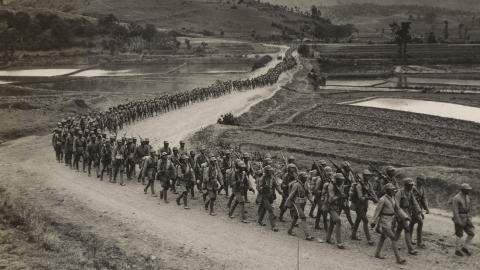How Russia Won the Battle of Stalingrad
Surrender is forbidden. Sixth Army will hold their positions to the last man and the last round.
Hitler to General Paulus, January 24, 1943
In the spring of 1942, the German offensive against the Soviet Union was nearly a year old. Hitler, believing that he could win in the East by staging a decisive offensive in the south aimed at the Soviet Union's economic resources, launched a two-pronged attack on 28 June. Army Group A pushed towards the oil-rich area of Baku, and Army Group B advanced towards Stalingrad and the Volga. Stalingrad was a key strategic target. It was an important industrial centre, communications hub, and sat astride the Volga River. Capturing Stalingrad would cut this waterway – the principal supply route from south to central and northern Russia.
The Red Army, demoralised and disheartened by a year of bitter and costly defeats, began to employ a new strategy: the fighting retreat. Instead of defending their positions at all costs – a strategy which had led to heavy losses during the first year of the war – Soviet units were now ordered to withdraw in the face of strong German attacks. This tactic would turn the vast expanse of the Russian steppe against the Germans, and put huge strain on their supply lines.
The German Sixth Army, commanded by General Friedrich Paulus, advanced quickly, assisted by the Fourth Panzer Army. By the summer of 1942 they had reached the suburbs of Stalingrad on the west bank of the Volga. Here the Soviet retreat ended, and Vasily Chuikov prepared to lead a determined defence of the city. As the battle began in earnest, the Luftwaffe dropped 1,000 tons of bombs on Stalingrad, a misjudgement that created a rubble-strewn landscape perfect for defence.
German troops were taken aback by the fierce street fighting they found themselves engaged in during their advance to the city centre. For soldiers accustomed to the well-choreographed mobile warfare, ferocious close-quarter fighting in the city's ruins was a new and terrifying experience.
The Soviets had their own problems. Reinforcements had to be ferried into the city across the Volga, often under heavy shelling and bombing. Many units suffered large casualties before even going into action. Soviet Penal Units, several containing political prisoners, were used for suicidal charges. The average life expectancy of a Soviet soldier during the height of the battle was just 24 hours.
In 19 November 1942, the Soviets used one million men to launch a counterattack, Operation Uranus, encircling the city and trapping the German Sixth Army within it. For Paulus and his men, the situation was desperate. Winter was setting in, and they were running out of food, ammunition and medical supplies. Despite the Luftwaffe's efforts, it was not possible to get enough supplies in by air. In December, a relief operation mounted by General von Manstein narrowly failed to break through to the city. It was the last hope for the Sixth Army.
On 2 February 1943, General Paulus surrendered with the 91,000 troops that remained. The tremendous human cost of the battle is difficult to comprehend. The Axis forces (comprised of German, Italian, Romanian and Hungarian troops) suffered 800,000 casualties, the Soviets more than one million. The battle marked the furthest extent of the German advance into the Soviet Union, and is seen by many historians as a key turning point in the war.
Did you know?
In the narrow streets of Stalingrad's suburbs, the Germans had to fight for every house. During the fighting, it was not uncommon to find houses in which the basement and ground floor were occupied by the Soviets, and the top floors by the Germans
















